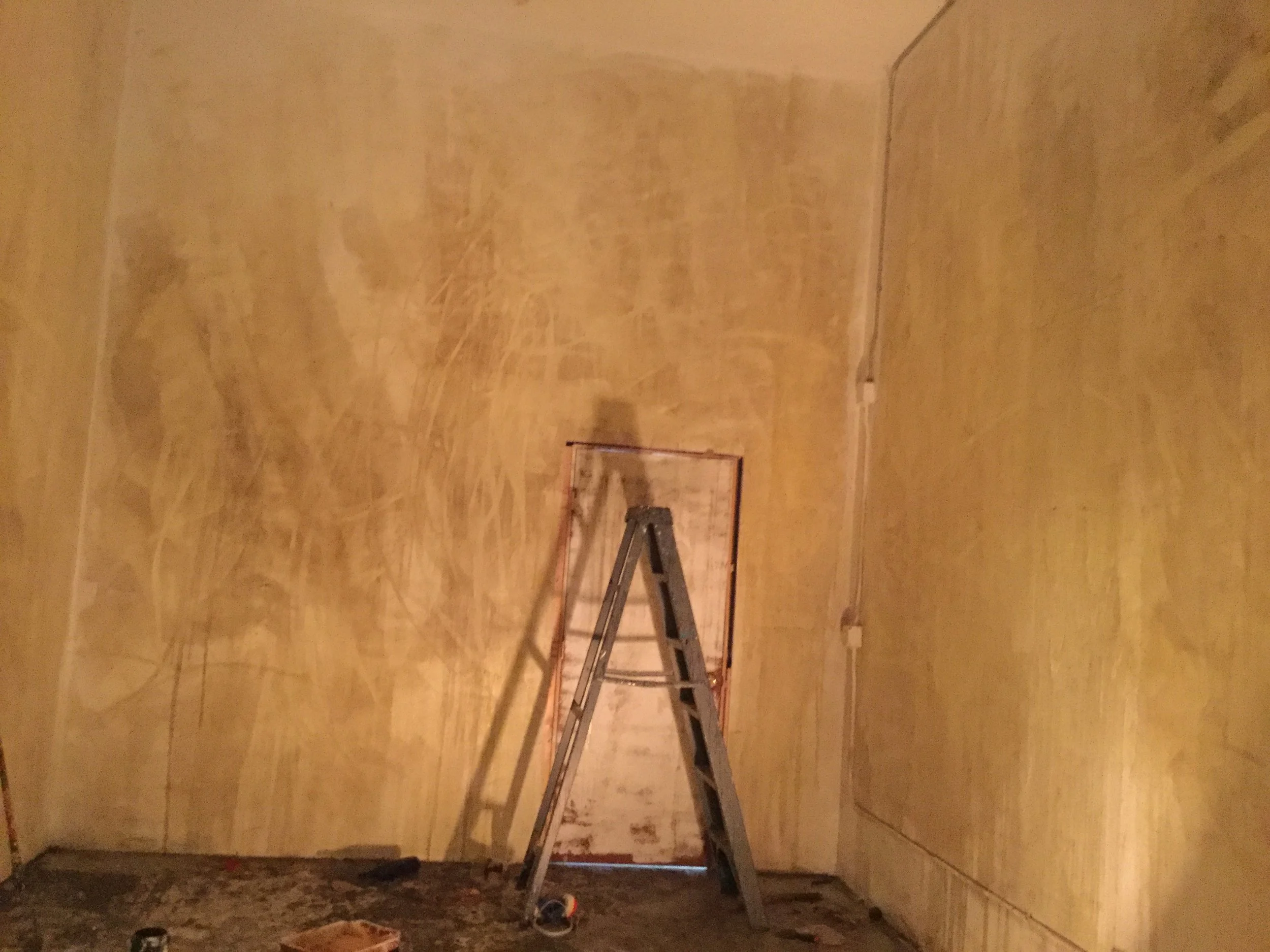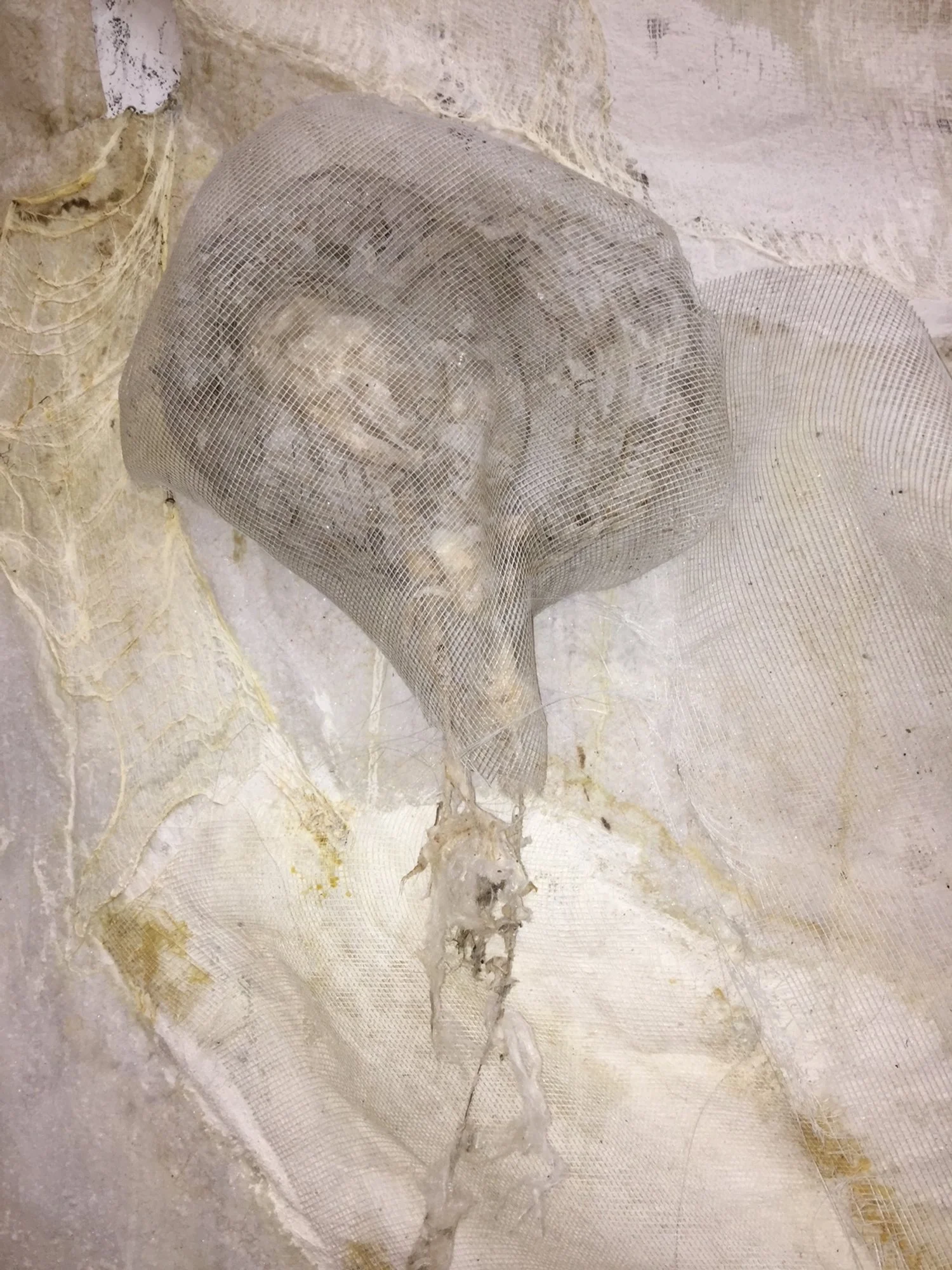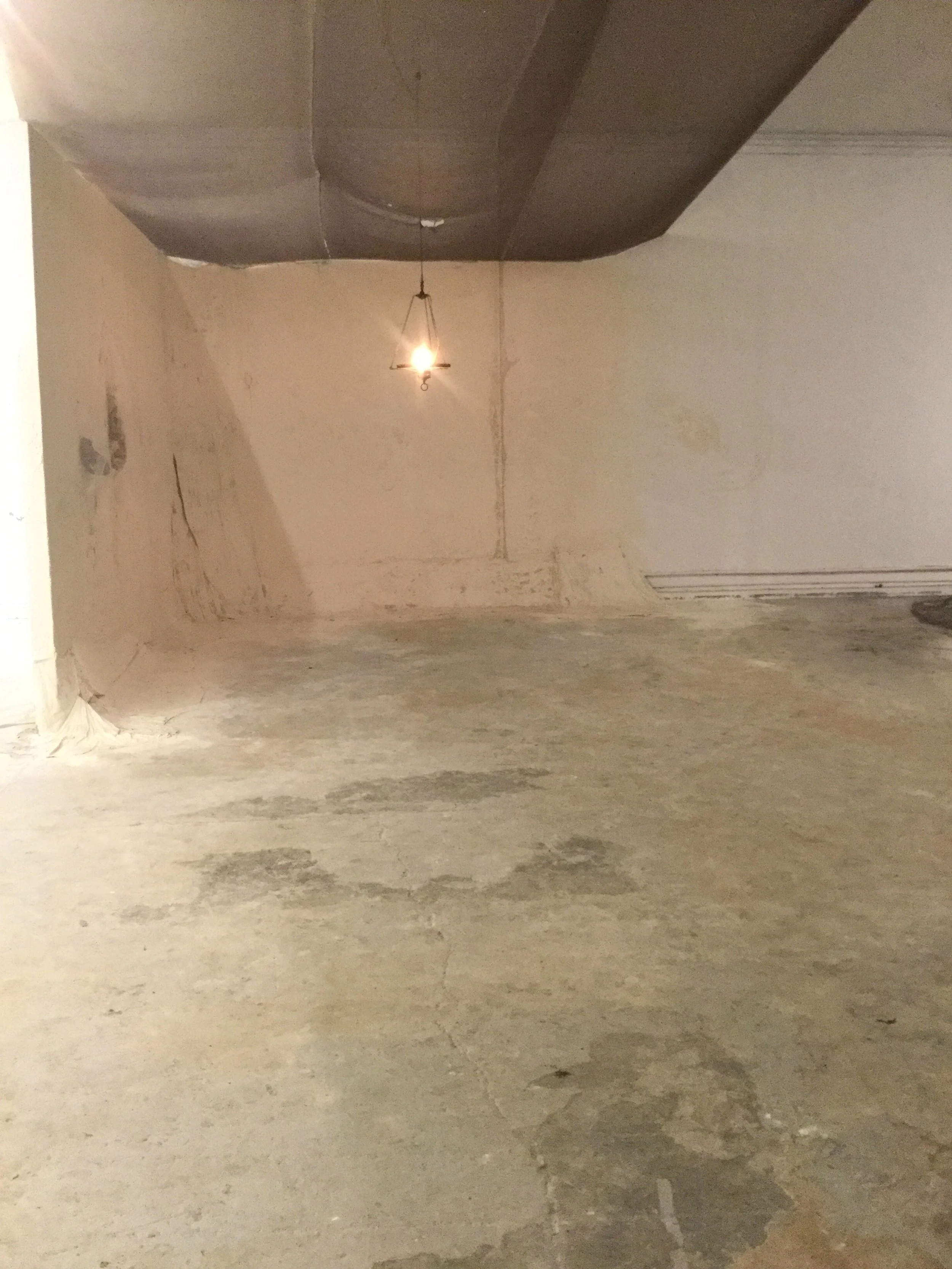o r i g i n s of
o r i g i n s of
Dirt, tea, turmeric, walnut ink, salt, rust, rice, charcoal, text. Lit by single “dipped” bulb hung 5” off the floor. Sound: recording of breath from mic on throat. Scent: mixture of oils infused in room.
Senior Thesis Project: Bard College, April 2018
Installation and performance piece: language, process, body, ritual, art theory
Before and After
Project Description and Artist Statement (Written in 2018)
I live with material until it completes itself.
o r i g i n s of was a fully immersive, multi-sensory installation and performance piece.
[o r i g i n s] was an act of translation, a paring down—or synthesis of—time, body, and material to their essential forms. What remains at the end of its completion is the imprint of a year of private performances through which I reshaped the way I see and the way I touch. It is my hope that this work created a space which allowed viewer and artist to share the experience of making, something I find far more rewarding that any completed work.
The show spanned four hours, during which I—in clothes I myself made—wrote in my own “language” a single sentence again and again on the walls of my studio, slowly making my way around the room. I wrote with a solution of liquid rust, which grew thinner and thinner, losing opacity over time until, at the end of the performance, the writing was nearly invisible.
The door remained closed during the entire show with the exception of those entering and exiting the room. This created an atmosphere of being removed from not only the gallery space, but also from linear time itself.
The space was lit by a single bulb—dipped in rice glue and salt which slowly warmed and emanated a subtly sweet smell and slight crackle as it crystalized—and was hung above the ground, with just enough space for my body to lay beneath it.
The walls were “drawn” over the course of many months with turmeric, tea, rust, and the dirt from my studio floor. By the end, I lost track of the number of layers, but the result was a room that seemed to breathe and extend beyond itself.
The space was filled with the scent of my materials and a blend of oils. Many compared the scent to that of linseed oil and ginger or lemongrass and sandalwood.
Viewers were asked not to speak, but were free to touch anything in the room. The walls were textured with etchings and dried salt, which acted as a low relief only experienced through touch.
There was a hidden speaker playing a low, almost inaudible tone of the vibration of my own breath. I recorded myself breathing—by lying entirely still for 1 hour—with a lavalier microphone taped over my throat, which picked up not only my breath, but my heartbeat as well. This sound became one that was both internal and external and when played in the room, echoed throughout as a shadow. Only those who stayed for more than a few minutes picked up on the sound.
The performance was not preconceived but came to me in the moment. I had my materials in the room and as people started to enter the space, I began writing. I knelt on the ground working my way around the room in complete silence, never acknowledging those around me. I wrote in my own alphabet, a code that no one but myself can read.
Many people stayed or returned multiple times though the performance had not changed. One viewer stayed for over 2 hours, slipping into a deep meditative trance much like my own.
The title of the show [o r i g i n s] was very intentional, but I don’t believe the audience picked up on it. [o r i g i n s] was named for the processes through which it was conceived: origins of the body, language, line, thought, material, concept, personal origins, process, the list goes on. My greatest fear when showing the piece, was that the audience might view it as a kind of appropriation, though of what I cannot say. In the end, the space resembled that of ruins, and the performance embodied a sort of monastic, ritualistic ceremony. It could be read as eery or enlightening, sanctuary or cell.
In addition to the main show, I had a separate space exhibiting my large-scale drawings [see ‘self portrait’ and ‘artist book’]. These were process-based works, which rely on the dimensions of my body in a critical but not immediately visible way. These were included as they were the first “performative” pieces I created, a process which became the inspiration for my first [and only] public performance.
The final part of the show [not pictured] was a hidden corridor. Upon first glance it appeared to be nothing more than a black wall. Many people missed this space, but those who stepped into the darkness were met by a narrow 13’ wall of code [now my “language”] which slowly came into focus, glowing and wavering like stars. This was perhaps my favourite part of the show, as it was the most unexpected and enigmatic. The writing cannot be read or translated by anyone but myself, but it reads as a poem.
DIATOMACEOUS
‘DIATOMACEOUS’
diatomaceous earth, fabric, drywall tape, cotton, found materials, rust, salt, black walnuts, ink, animal jawbone























































